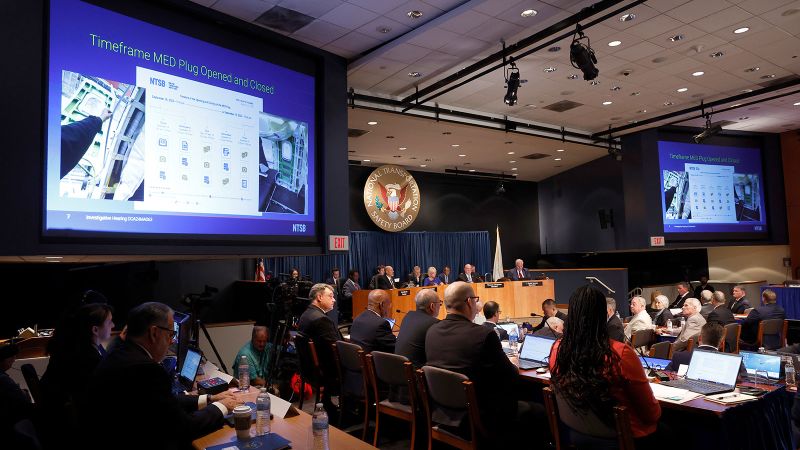Boeing and the National Transportation Safety Board have been conducting investigations into an incident involving a Boeing 737 Max that was delivered to Alaska Airlines without the necessary bolts to keep a door plug in place. The lack of proper procedures and training by both Boeing employees and safety investigators has drawn scrutiny from regulators. The NTSB held a two-day public hearing to examine the incident that occurred on January 5, involving a door plug blowing out during a flight, leading to a hole in the side of the plane and further damaging Boeing’s reputation.
The temporary removal and reinstallation of the door plug at the Boeing factory in Renton, Washington, revealed a lack of necessary paperwork and confusion among workers regarding the installation of the bolts. Elizabeth Lund, senior vice president of quality for Boeing Commercial Airplanes, admitted under questioning that it is unclear when and by whom the door plug was initially put in place, raising concerns for the NTSB about the lack of information surrounding the incident. The safety management and quality management systems at Boeing were examined during the second day of hearings, revealing gaps in the systems that still need improvement.
Boeing’s 737 factory has a history of unauthorized work on door plugs, which has raised concerns about the potential for similar incidents to occur again in the future. NTSB Chair Jennifer Homendy expressed doubts about Boeing’s ability to prevent defects from occurring and questioned whether the necessary changes will be made to avoid another incident. Boeing executives acknowledged the need for improvements in the company’s operations and committed to making necessary changes to prevent such incidents from happening again.
The NTSB criticized both Boeing and the Federal Aviation Administration’s oversight of the company, highlighting a pattern of safety issues that have not been fully addressed in the past. The sidelining of two employees involved in the Alaska Airlines incident raised concerns about potential retaliation against workers who report errors, discouraging others from coming forward. To prevent similar incidents in the future, Boeing is considering adding warning lights in the cockpit to alert pilots of any door plug movement, providing an early warning system for potential issues.
Testimony from Boeing employees highlighted concerns about training, pressure for speed, and quality control issues within the company. The NTSB released documents containing disturbing statements from workers and experts, revealing a chaotic environment at Boeing with challenges in training and confusion about responsibilities. The shift to a “lean” manufacturing model at Boeing was criticized for cutting inspections and leading to quality control issues, with significant rework needed on many planes. The company has agreed to plead guilty to charges of defrauding the FAA and may face further criminal charges related to the Alaska Air incident.
Boeing executives faced tough questions and criticisms from NTSB board members for their handling of the incident and the company’s overall safety practices. The NTSB emphasized the importance of focusing on the problems that allowed the incident to occur rather than solely on the changes made since the incident. Boeing’s commitment to making permanent changes to improve safety and quality was emphasized, but the company was urged to make proactive improvements to prevent future incidents. Overall, the hearings highlighted the need for continued vigilance and improvement in Boeing’s operations to ensure the safety of its aircraft and passengers.













